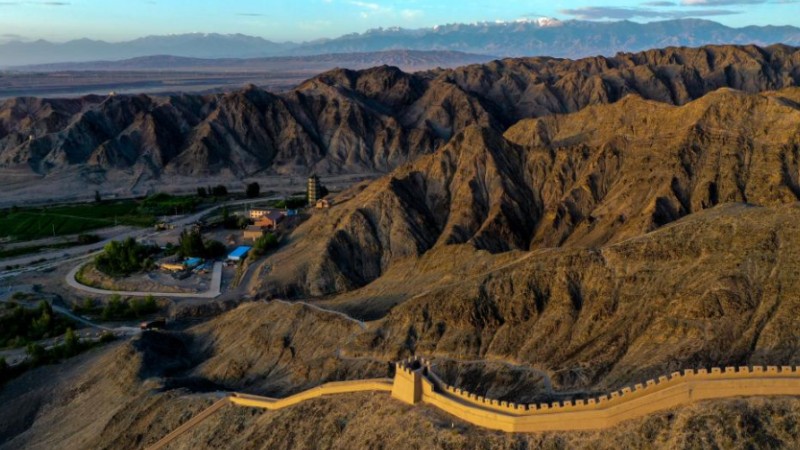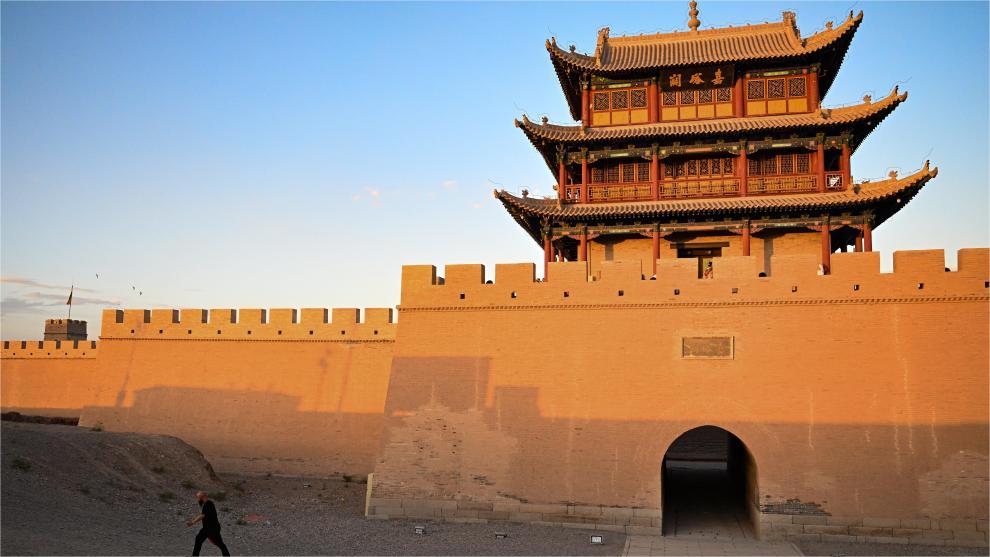China's history of harmony paves modern roads
HEFEI, Dec. 11 (Xinhua) -- Tales of the philosophy of harmony in China's history continue to inspire generations today, and they have enlightened modern urban management in east China's Anhui Province.
In Xidi Village, which is located in Yixian County in the city of Huangshan, a Qing Dynasty (1644-1911) building facade inscribed with the words "Take a step back" has been attracting tourists who have heard the story behind it.
The story of a local official, Hu Wenzhao, shows how harmony is esteemed in Chinese culture. When Hu was renovating his ancestral home during the Qing Dynasty, he decided to round out its corners and pull back its walls by half a meter to provide more space for pedestrians. Many of his neighbors later followed his design, creating a more spacious and lively neighborhood.
"'Take a step back' is the ancestral motto of our Hu family. This sense of harmony can be found everywhere in Huangshan and its surrounding areas," said Hu Aoli, a descendant of Hu Wenzhao and the Party secretary of Xidi Village.
"A step back is a step forward. Today, we draw inspiration from the old story to expand its application in urban management, in areas such as dispute resolution and Party building, and we've found it works quite well," Hu Aoli said.
In 2020, local authorities refurbished the time-honored building and opened a mediation room in it, and mediators there successfully solved many disputes by following a harmonious manner.
Harmony is a core value of China's Hehe culture, which is widely appreciated in modern Chinese society.
The term "Hehe" consists of two Chinese characters that have the same pronunciation but different meanings: the first means harmony, and the second means convergence. In short, Hehe culture involves seeking common ground while reserving differences, and it means harmonious coexistence and coordinated development.
Liuchixiang, a 2-meter-wide alley in Anhui's Tongcheng City, is another location in China that has its own story of harmony.
During the reign of Emperor Kangxi over 300 years ago, high-ranking official Zhang Ying received a letter from his family in Tongcheng, his hometown.
In their letter, they told Zhang that they had quarreled over property boundaries with their neighbor, Wu, and asked for help.
Zhang replied to their letter with a poem: "A letter is written, just for a wall. If it moves a meter, what harm is done? The Great Wall still stands tall today, yet gone is its builder, Emperor Qinshihuang."
Enlightened by his reply, the Zhang family decided to bring their walls back by approximately 1 meter. Deeply moved by their generosity, the Wu family also brought their walls back by a meter, and the two households created a 2-meter-wide alley between their homes for passersby.
The alley is now a popular attraction that is traversed daily by locals.
"We use this story to mediate disputes, and we draw on its wisdom in our grassroots social governance," said Zhang Yun, who is the Party secretary of the Liuchixiang Community and a descendant of Zhang Ying.
The local people's court has also been inspired by the story, establishing over 300 mediation rooms for the resolution of disputes.
"Liuchixiang's name not only refers to the alley's physical width, but also to the broadness of people's minds. Many disputes can be nipped in the bud if one side takes just one step back," Zhang Yun said.
Photos
Related Stories
Copyright © 2023 People's Daily Online. All Rights Reserved.









